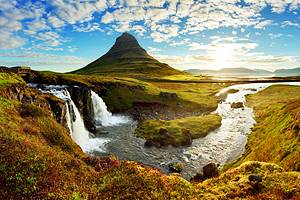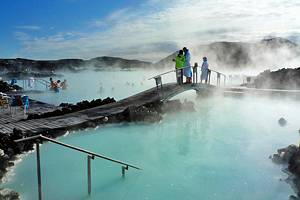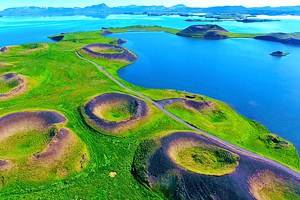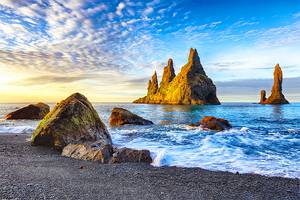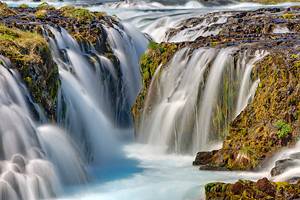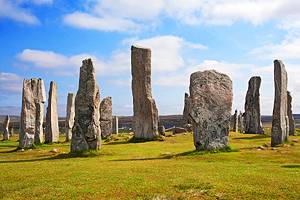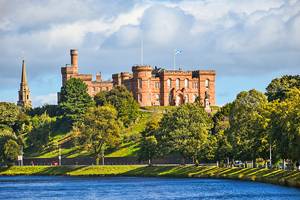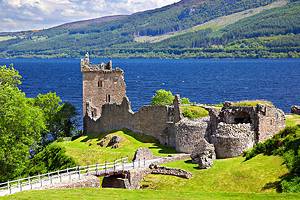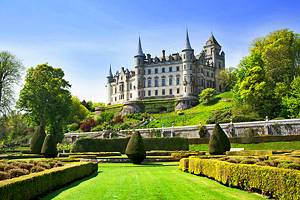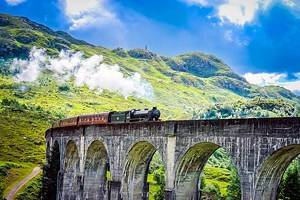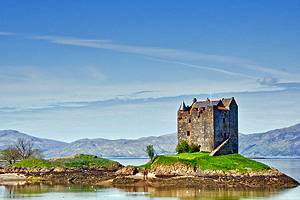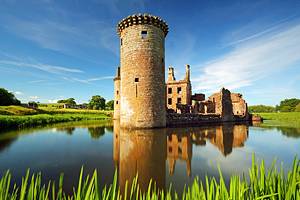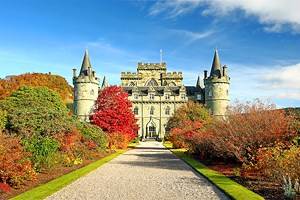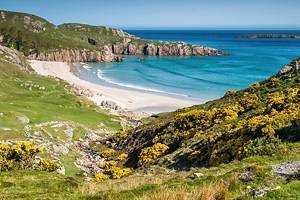Waterfalls in Iceland
Iceland is known for its natural beauty, from volcanos and glaciers to the colorful northern lights, but its waterfalls are some of the largest and most magnificent waterfalls in the world.
What makes them so spectacular is a unique combination of natural elements: Iceland's northern proximity to the Arctic makes for a cold climate with an abundance of rain and snow and large glaciers that produce impressive volumes of water during the melt in the summer.
Iceland has large cliffs and a jagged volcanic landscape that combines with the massive amounts of flowing water to create jaw-dropping waterfalls. There are a number of famous waterfalls in Iceland that are must-sees, but there are also smaller waterfalls that you are likely to see in every direction as you drive throughout the country.
Plan your sightseeing with our list of the best waterfalls in Iceland.
Seljalandsfoss
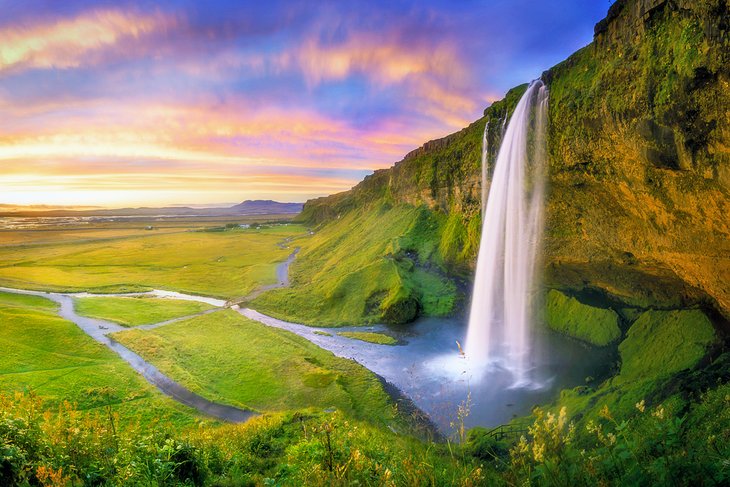
Seljalandsfoss tops the itinerary of many visitors to Iceland because it is easily accessible and has a majestic presence. The waterfall is located in the southern region of Iceland and drops 60 meters into the Seljalands River. One of the unique features of this waterfall is that not only can you get up close to it, but you can walk behind it into the recessed cave.
To get to Seljalandsfoss, you can take the Ring Road to the south out of Reykjavik by car. You can also hire a guide and take a day trip to see the falls.
Since this is one of the most popular waterfalls in Iceland, you should plan on visiting it in the early part of the day before it becomes busy with tourists.
Glymur
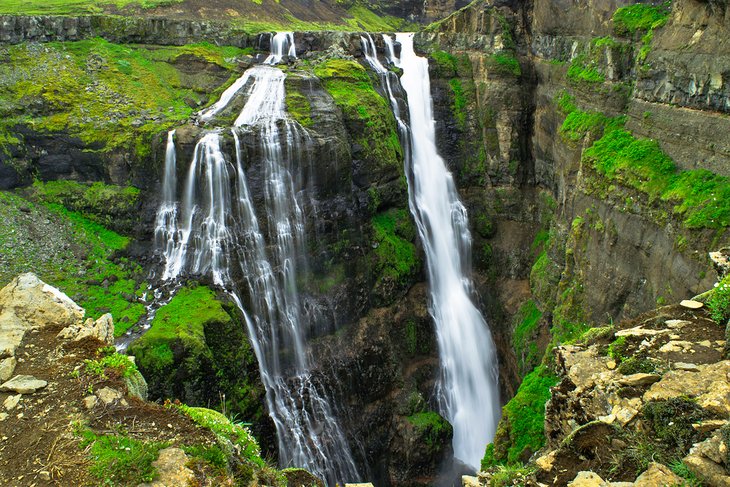
Before 2011 and the discovery and measurement of Morsárfoss, the Glymur waterfall in western Iceland was the country's tallest at 198 meters. It now holds the record as the second-highest waterfall in Iceland.
It is located on the Hvalfjörður fjord and has a series of narrow falls cascading in various volumes down the cliff face.
Depending on the time of year, the waterfall is dramatically accented with stark grey and dark rock and vibrant green moss.
The Glymur waterfall requires quite a bit of effort to access. You can get to it from a parking lot and trail at the bottom of the Hvalfjörður fjord. The hike to the falls is approximately five hours round trip at an extreme height. You will also need to cross a river holding onto a wire as you walk along a suspended log. This is a strenuous trek and it is advised that you hire a guide who knows the landscape and can provide you with proper safety equipment, like helmets.
Skógafoss
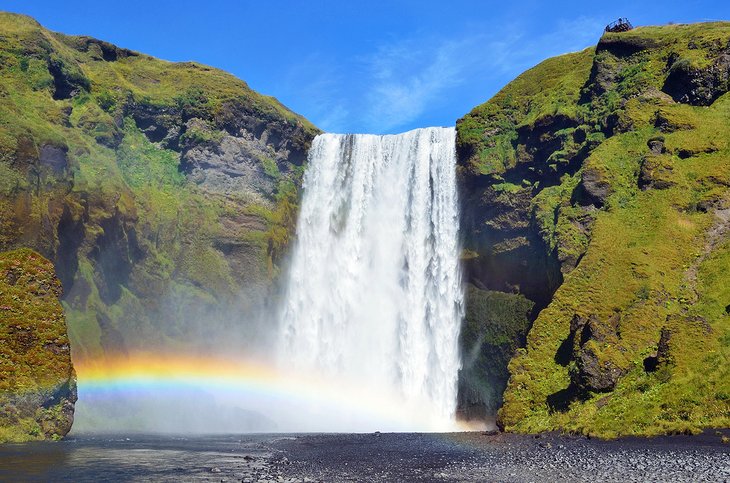
Skógafoss in southern Iceland flows over what used to be ocean cliffs. The waterfall is 60 meters high and is more than 25 meters wide, so it is quite impressive, especially when there is a large amount of water flowing. It is one of the biggest waterfalls in the country.
Due to the large amount of spray coming off Skógafoss, there are often rainbows produced, which makes for beautiful photographs.
You can view the waterfall from different vantage points with access below and from higher points. Skógafoss is easily accessed from the Ring Road.
Morsárfoss
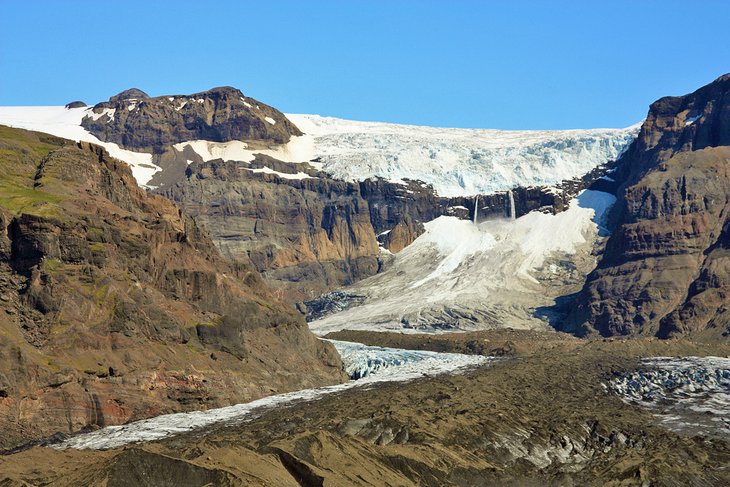
Iceland pushes the natural extreme with everything, and its waterfalls are no different. Morsárfoss, in southeast Iceland, is the country's tallest waterfall, measuring 228 meters high, but it could be up to 240 meters, as part of it is concealed.
The new record waterfall was confirmed by scientists in 2011. It is believed that Morsárfoss became visible as early as 2007, when the ice melt on Morsárjökull, an outlet of the Vatnajökull glacier, revealed the magnificent water flow.
The Morsárfoss waterfall is not only high, making for a dramatic water drop, but there are smaller waterfalls cascading around it.
The waterfall is framed by the glacier above and below it. It is extremely difficult to get to, and you are not advised to hike to it, as it requires expert-level glacial hiking. Your best options for viewing it are from afar.
You can hike to the Kristínartindar peaks, which is still strenuous and you will still need binoculars to see it. You can also see the waterfall slightly from the Ring Road near the Skeidarársandur plains, which is the safest option. Keep in mind that it took several years for even the scientists studying it to access it, so a distant view for tourists is still a great experience.
Gullfoss
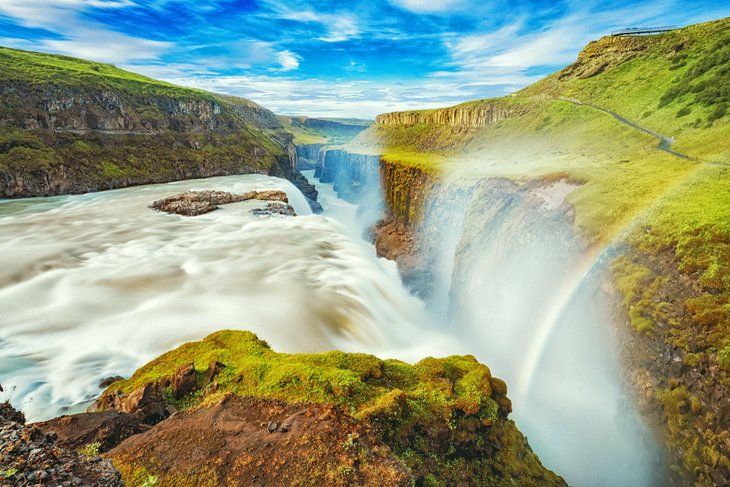
Even if you have never been to Iceland, you have likely heard of Gullfoss because it is one of the most famous waterfalls in the country. Gullfoss is located in Iceland's famous Golden Circle, so it is easy to take a tour and see other things in the area besides the famous waterfall. Gullfoss has a drop of 32 meters into the Hvítá river below.
The waterfall pattern is beautiful, with a two-tiered drop into the gorge. It first plunges for 11 meters and then another section for 21 meters before it seems to disappear into a crevice that seems to drop into the center of the Earth. There are paths around the waterfall if you want to get up close.
This waterfall has many visitors, so use caution on the walkways, which may be slick and crowded.
Dettifoss
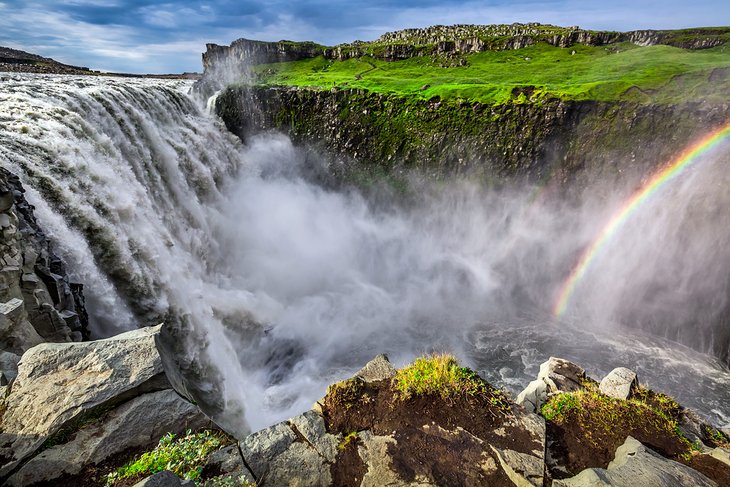
Dettifoss in northern Iceland is one of the biggest and most powerful waterfalls in all Europe. The falls drop 44 meters, but it is the sheer volume of water that makes this waterfall so impressive. Dettifoss is located inside the Vatnajökull National Park in northeast Iceland, so it is easily accessible to the public.
The appearance of the water at Dettifoss is a grey-white color due to the runoff from the nearby Vatnajökull glacier. One of the most impressive sensory experiences at Dettifoss is the thunderous roar of the water crashing into the gorge.
While this waterfall is accessible, you will want to check road conditions if you are traveling outside of the summer season. It is not uncommon for roads to close due to weather conditions in the area.
Selfoss
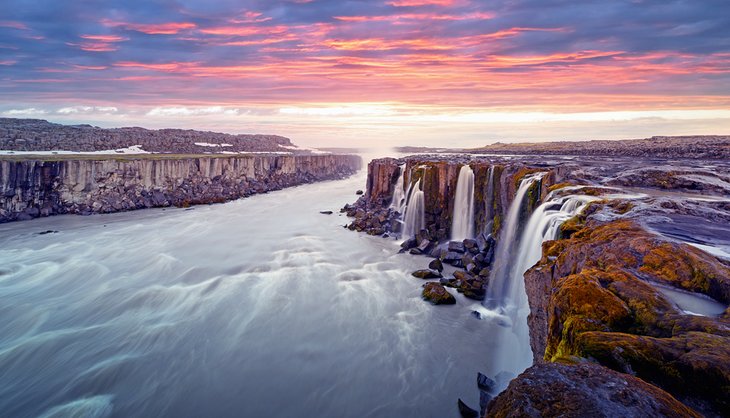
Selfoss in northern Iceland is a spectacular waterfall to visit. This is a wide waterfall in the Jokulsargljufur National Park measuring 100 meters wide, and it is only 11 meters high. Selfoss is not far from Dettifoss, so you can plan a visit to both in one day, and you can take the 10-minute hike between both.
Selfoss can be seen from several sides, but it is recommended that you access from the east side for the best view of the water. There is quite a bit of spray coming off the waterfall, so be prepared to get wet and take proper precautions with electronic equipment likes phones and cameras.
Háifoss
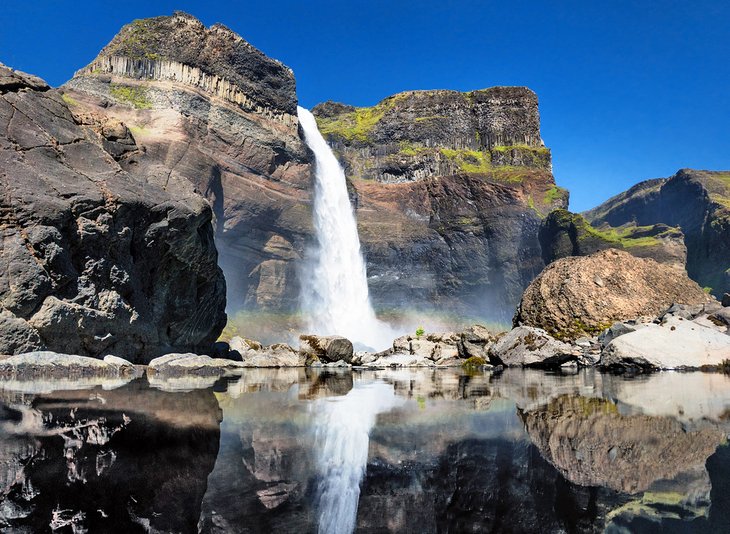
The massive Háifoss in southern Iceland is one of the tallest waterfalls in the country. It drops 122 meters, cascading down protruding rock crashing into a canyon. The steep rock around the waterfall is a stunning landscape since it is located near the Hekla volcano.
You can reach Háifoss by heading east on the Ring Road out of Reykjavik. There is a parking lot near the top of the falls and several hiking trails in the area to access different vantage points. There are several waterfalls in the area that you can visit on the same day.
Dynjandi
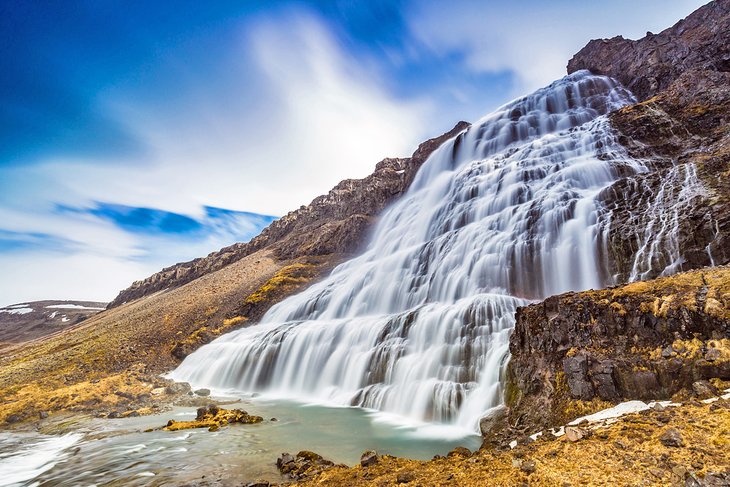
One of the most dynamic waterfalls in Iceland is the Dynjandi falls due to its multiple sections. It is located in the Westfjords and is a must-see if you are visiting the west side of the country.
The waterfall is a 30-meter cascade at the top that flows into a dramatic 60-meter-wide waterfall below. In total the Dynjandi waterfall drops 100 meters.
There are six additional waterfalls below Dynjandi that you can see during your visit. If you hike the main path to Dynjandi, you will pass the other waterfalls, and there are observation platforms from which to view the falls or rest.
Faxi
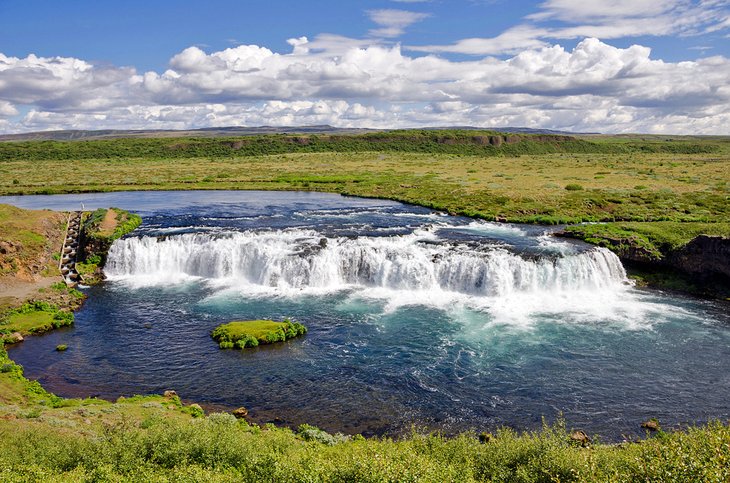
The Faxi waterfall, also called the Vatnsleysufoss on many local maps, is in the south along the Golden Circle, so it is often included on tours to that part of the country.
This a wide waterfall in the area of Tungufljót, where an 80-meter-wide river flows through farmland before it plunges seven meters into the lower section.
Faxi can be accessed by taking the Golden Circle route near Geysir. There is a parking lot and a small path that leads back to the waterfall. Due to the easy accessibility of Faxi, it often has many tourists.
Svartifoss
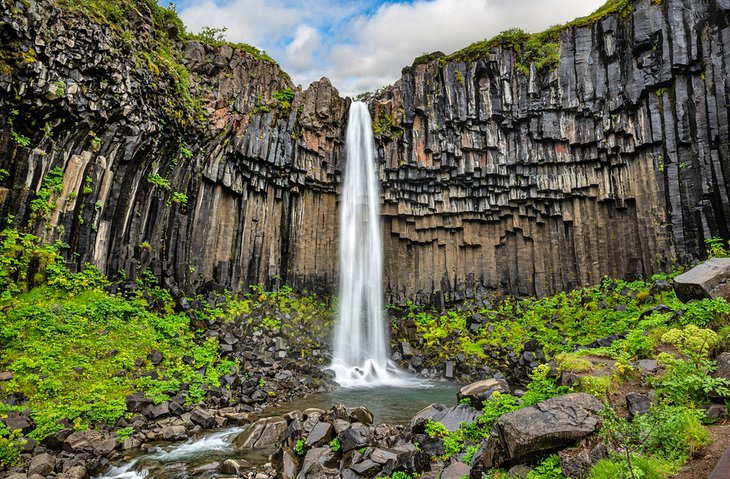
Svartifoss is often referred to as Black Falls due to the large textured columns of lava rock that surround it. The stark contrast of the black basalt columns and the brilliant white of the waterfall makes a beautiful scene.
Svartifoss is located in southern Iceland and is one of several nice waterfalls in Skaftafell/Vatnajökull National Park.
Svartifoss has a 20-meter drop and is one of the more unique waterfalls in Iceland due to the crystallization of volcanic rock around it.
There are two trails that lead back to the waterfall starting from the visitor center. For the best views of Svartifoss, it is recommended to go up on one path and come down on the other.
Goðafoss
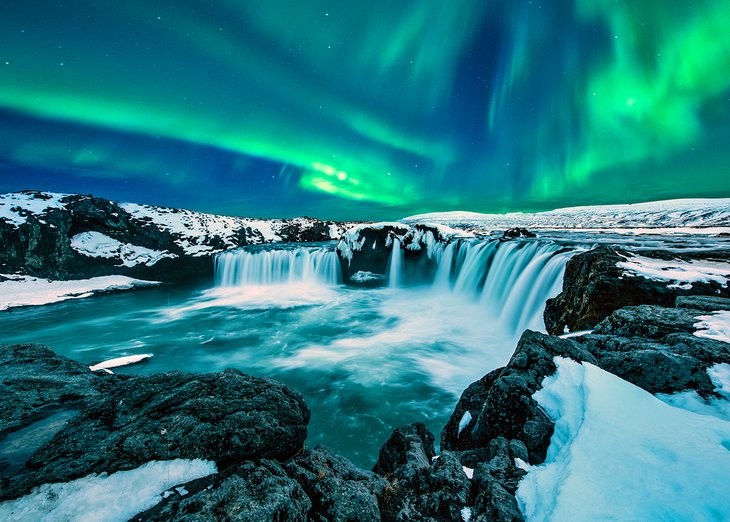
Goðafoss in northern Iceland is one of the most well-known in the country. Its name means waterfall of the Gods. Goðafoss is a wide and dramatic waterfall that has a width of more than 30 meters. The drop of the waterfall is 12 meters, but the panoramic impression of this waterfall is what makes it so beautiful.
The waterfall has a fascinating history, when Christianity was made the official religion in Iceland in the year 1000 and statues of Norse Gods were reportedly tossed into the waterfall.
It is easy to get to Goðafoss from the Ring Road. You can also take a guided waterfall tour out of Reykjavik that includes it.
Hengifoss
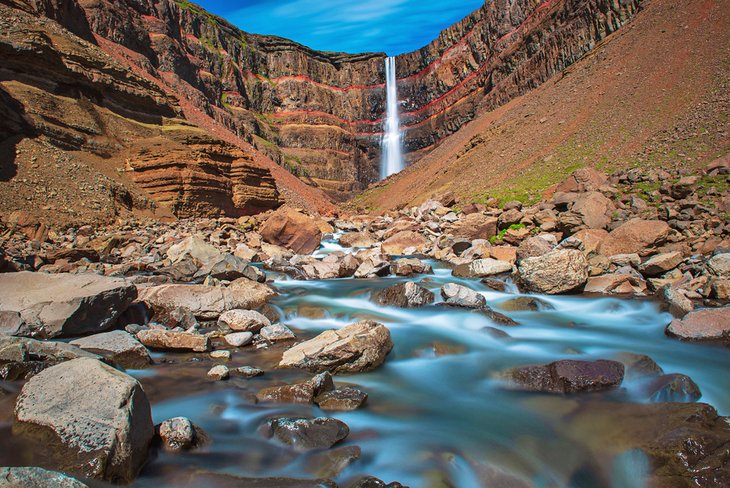
Another of the tallest waterfalls in Iceland, Hengifoss is located in the eastern part of the country. This waterfall drops 128 meters through a mountain of basaltic strata, so it is naturally primitive and beautiful. You will notice unique streaks of red color in the rock.
The hiking paths around Hengifoss are some of the most popular on the east side of the country. There is a parking lot and a 1.5-mile trail that leads back to the waterfall. This spot can be quite popular in the summer months with tourists, so it is best to go early in the day to get a parking space.
Brúarfoss
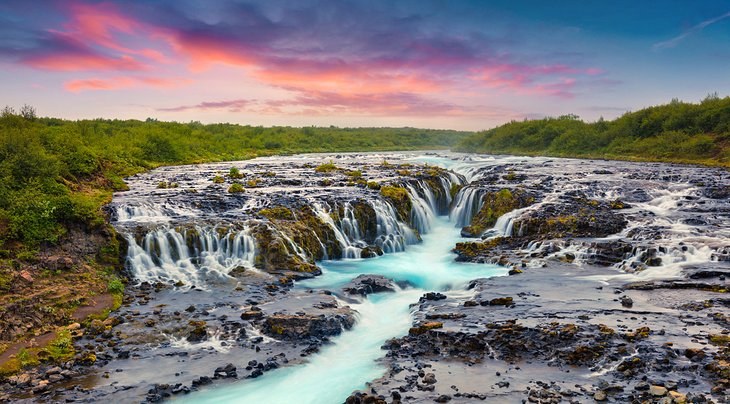
Brúarfoss is a smaller but beautiful waterfall in southwest Iceland. It is located just off the Golden Circle route, and while it is somewhat difficult to locate, it is worth the trek.
The remarkable feature of Brúarfoss is its dramatic glacial-blue color. Brúarfoss is only about 20 minutes outside of Reykjavik.
Hraunfossar
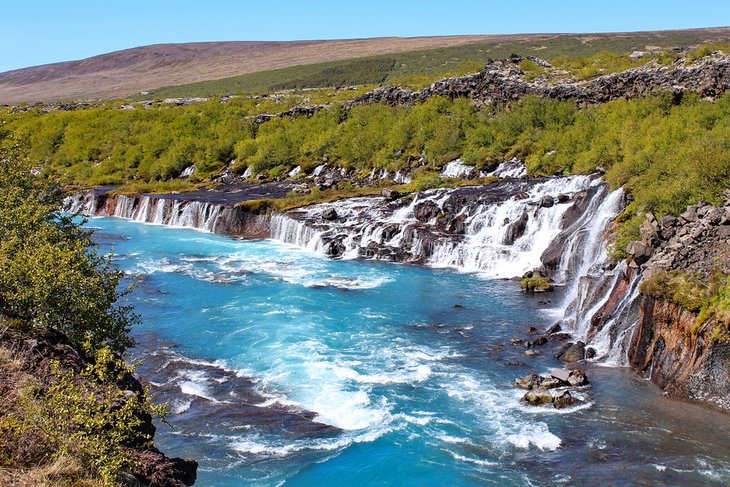
The beautiful dynamic of Hraunfossar in western Iceland looks like veins running through the body. The series of dozens of small streams of water, interconnecting then separating across a vast lava field before going over the cliffs, is one of the most picturesque waterfalls in Iceland.
The small rivulets that define Hraunfossar stretch for about 900 meters across lava that was formed from volcanic eruptions beneath the Langjökull glacier.
You can see the waterfall from the parking lot, or you can take a trail back to the falls.
There is another waterfall nearby that is easily accessed during your visit called Barnafoss, which you can walk to from Hraunfossar.
Aldeyjarfoss Waterfall
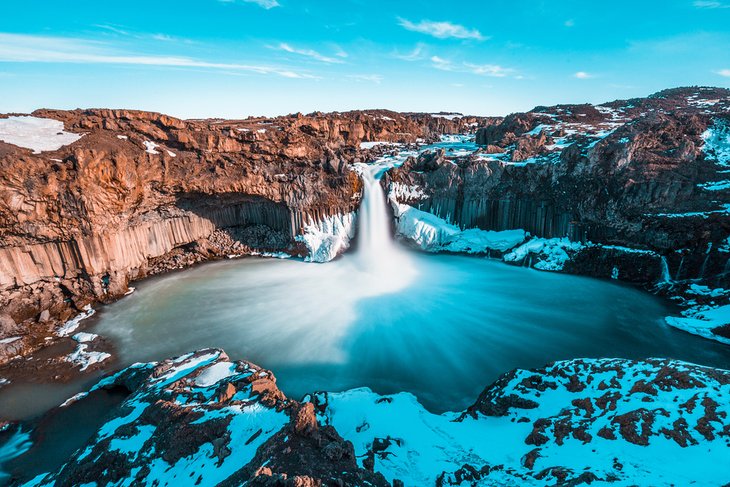
The Aldeyjarfoss waterfall is the tallest of a group of waterfalls on the Skjalfandafljot River, towering at more than 65 feet high. This is a popular waterfall for photographers due to the dramatic contrast between the rushing white water and the dark basalt columns beneath it.
It is not far from the Goðafoss waterfall, so you might want to visit both on the same day.
This waterfall is in northern Iceland and is slightly off the beaten path. You can get to it from Ring Road to Route 842 then travel to Road F26. Be advised that both the road terrain and walking terrain as you get closer to the falls is rugged, so be sure to plan accordingly. A 4x4 vehicle is recommended, or you can park your car when the gravel road begins and walk to the falls.
Kirkjufellsfoss Waterfall

The draw of the Kirkjufellsfoss waterfall is that behind the wide, cascading water is the added scenery of the majestic Kirkjufell Mountain. The waterfall is in western Iceland on the Snaefellsnes Peninsula.
The variations of scenic interest, depth, and color make this waterfall one of the most spectacular to visit and photograph especially during the midnight sun or beneath the northern lights.
You can get to the Kirkjufellsfoss waterfall from Road 54, which goes around the Snaefellsnes Peninsula. There is a parking lot and walking trails that lead to the waterfall.
For an added excursion, you can hike Kirkjufell Mountain, which takes about 1.5 hours, but you will want to prepare with sturdy shoes and proper clothing, and it is not recommended in wet conditions.
Map of Waterfalls in Iceland
More Related Articles on PlanetWare.com
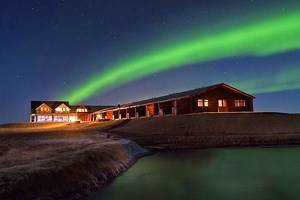
Exploring More of Iceland: As you plan your trip to Iceland, you will likely want to stay in Reykjavik and make day trips to see the waterfalls in different regions.


